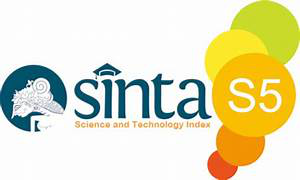PENGARUH KAMPANYE KOMUNIKASI PADA GERAKAN BOGOH KA BOGOR†TERHADAP PERUBAHAN SIKAP MASYARAKAT (Studi Kasus KECAMATAN BOGOR TENGAH)
Abstract
ABSTRACT
This study uses a quantitative method entitled The effect of the communication campaign on the "BOGOH KA BOGOR" movement towards changes in people's attitudes. This study discusses how much influence the "Bogoh Ka Bogor" campaign has on the attitudes of the people of Bogor City. In this study, the independent variable is the communication campaign while the dependent variable is the change in community attitudes. The population is 104120 people, with a sample of 100 people. The sampling technique used is stratified random sampling. The hypothesis used is a statistical hypothesis.
Based on the results of the multiple regression analysis that has been done shows that based on the t test it is known that the probability value of the t-count for variable X1 that is community characteristics is greater than the significant level of 0.05 (5%) which means that the respondent's characteristic variables have influence but not significantly towards community attitudes.
The t-test results for the communication campaign variable showed that the t-count probability value was smaller than the significance level of 0.05 (5%), which means that the communication campaign variable affected the attitudes of the people of Bogor, Bogor Tengah sub-district. The results of multiple regression testing obtained a regression coefficient of 0,000 with a significance value of 0,000 <0.05, meaning that the communication campaign has a positive effect on community attitudes, so if the communication campaign is improved the public attitude will increase. Based on the results of the F test this study showed that the two variables X1 and X2 with the F test produced p value = 0,000. Because the p value is 0,000 <0.05, based on the results of the F test or the simultaneous test shows the characteristics of the community (X1) and the communication campaign (X2) simultaneously influence on changes in community attitudes. Adjusted R-Square value of 0.481 This means that individual characteristics and communication campaigns have a proposition of influence on community attitudes of 48.1% while the remaining 51.9% (100% - 48.1%) are influenced by other variables that are not in the regression model linear
Keywords: Communication Campaign, BOGOH KA BOGOR, Public Attitude
References
DAFTAR PUSTAKA
Azwar, S. 2012. Sikap Manusia Teori dan Pengukurannya. Yogyakarta: Pustaka Pelajar.
Bungin, Burhan. 2008. Metodologi Penelitian Kuantitatif edisi pertama. Jakarta: Kencana
Cangara, Hafied. 2014. Pengantar Ilmu Komunikasi edisi kedua. Jakarta: Rajawali.
DeVito, Joseph A. 2010. Komunikasi Antarmanusia edisi kelima. Jakarta: Professional Books
Hoetomo. 2005. Kamus Lengkap Bahasa Indonesia. Surabaya: Mitra Pelajar.
Hungu. 2007. Demografi Kesehatan Indonesia. Jakarta: Grasindo
Kriyantono, Rachmat. 2006. Teknik Praktis Riset Komunikasi. Jakarta: Kencana Prenada Media.
Mahmudi. 2005. Manajemen kinerja sektor publik. Yogyakarta: UPP AMP YKPN.
Priyatno, Duwi. 2013. Analisis Korelasi, Regresi dan Multivariate dengan SPSS. Yogyakarta: Gava Media.
Sugiyono. 2013. Metode Penelitian Bisnis. Bandung: Alfabeta.
Sugiyono, 2014. Statistika untuk Penelitian. Bandung: Alfabeta.
Sujarweni, V. Wiratna. 2015. SPSS untuk Penelitian. Yogyakarta: Pustaka Baru
Press
Venus, Antar. 2009. Manajemen Kampanye: Panduan Teoritis dan Praktis dalam Mengefektifkan Kampanye Komunikasi. Bandung: Simbiosa Rekatama Media.
http://kotabogor.go.id/index.php/show_post/detail/1289/ini-kata-pelajar-soal-kampanye-bogoh-ka-bogor#. VnGQ-SdyWSo [16 DES 2015]
DOI: 10.33751/jpsik.v3i2.1296
Refbacks
- There are currently no refbacks.

This work is licensed under a Creative Commons Attribution-ShareAlike 4.0 International License.












